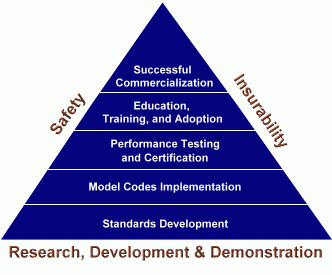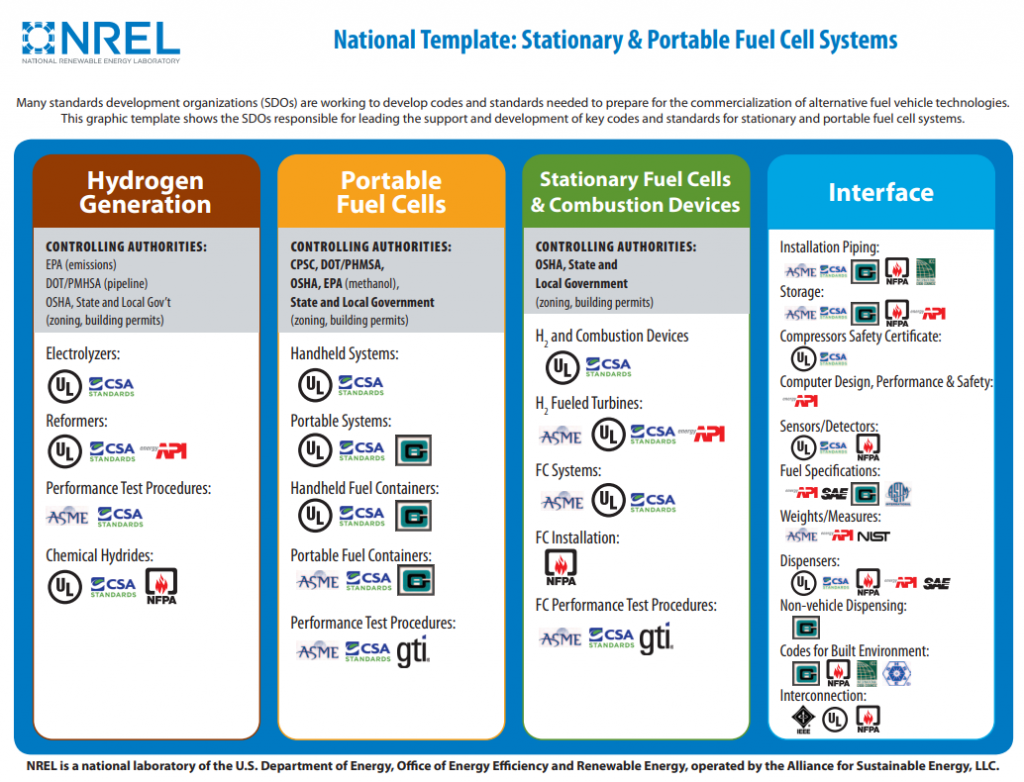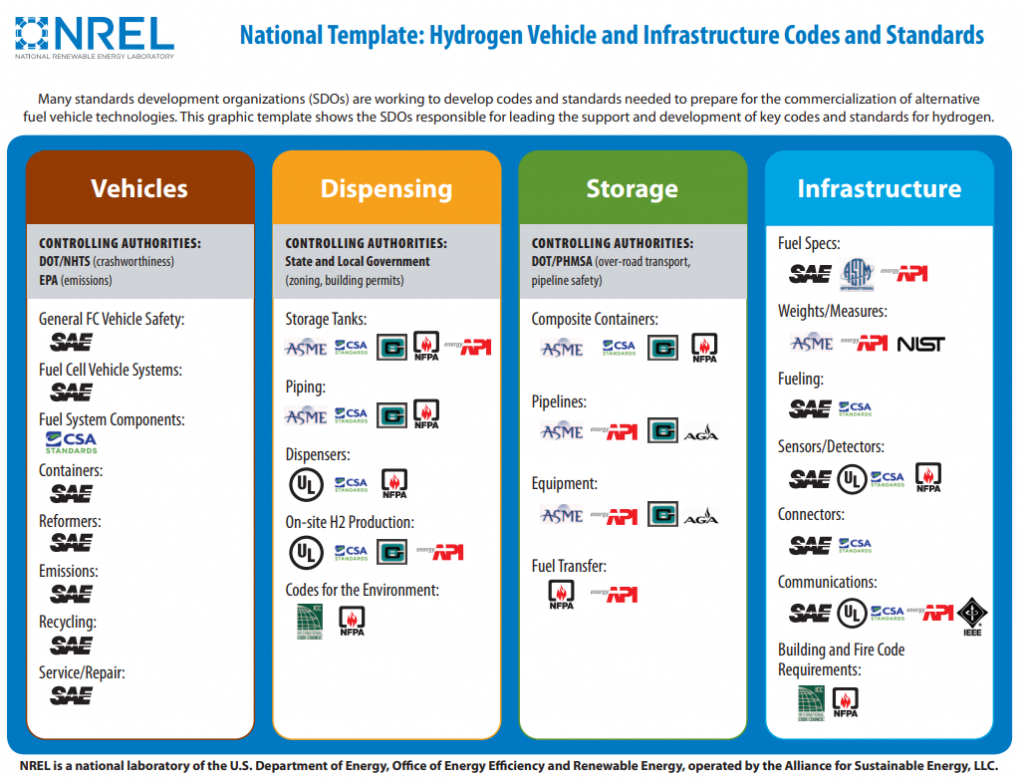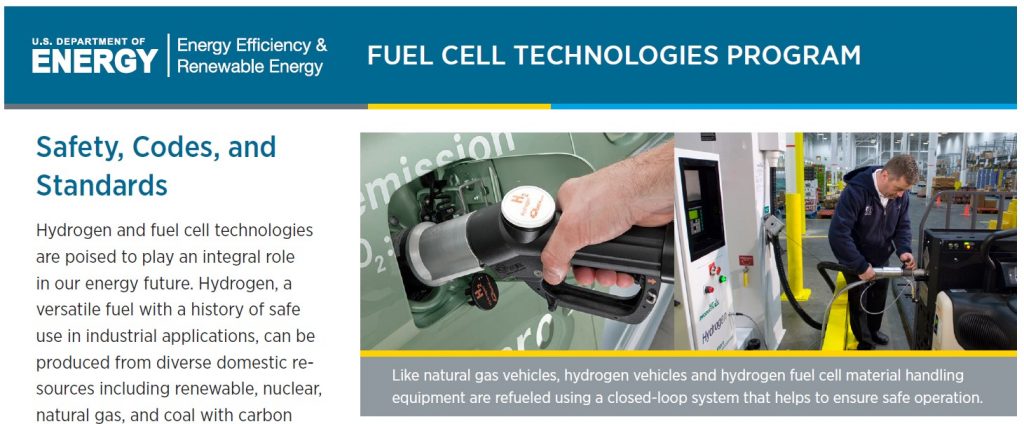Codes and standards provide the information needed to safely build, maintain, and operate equipment, systems, and facilities. They help ensure uniformity of safety requirements and give local inspectors and safety officials the information they need to approve systems and installations.
Codes are requirements for the built environment – buildings and facilities. They are generally adopted by local jurisdictions, thereby achieving the force of law. Codes often refer to or invoke standards for the equipment used within the given built environment.
Standards are rules, guidelines, conditions, or characteristics for products or related processes, and generally apply to equipment or components. Although they’re not regulations, standards achieve a regulation-like status when they are referred to in codes or through other government regulations.
Although hydrogen has been used in industry for decades, its use as a fuel for vehicles or stationary power generation in consumer environments is relatively new. As such, hydrogen and fuel cell codes and standards are in various stages of development. Industry, manufacturers, the government, and other safety experts are working with codes and standards development organizations to prepare, review, and promulgate technically-sound codes and standards for hydrogen and fuel cell technologies and systems. Codes and standards are being adopted, revised, or developed for vehicles; fuel delivery and storage; fueling, service, and parking facilities; and vehicle fueling interfaces. Codes and standards are also being adopted, revised, or developed for stationary and portable fuel cells and interfaces, as well as hydrogen generators.
Is hydrogen safe?
Hydrogen is a highly flammable gas and care must be taken that hydrogen is produced, stored, transported and utilised in a safe manner. Standards are already in place, and the European industry has built up significant experience with already more than 1500 km of dedicated hydrogen pipelines in place. With hydrogen consumption expanding to other markets and end-use applications, the strategy points out that the need for safety standards from production, transport and storage to use is critical, include a system to monitor and verify.

Current approaches
Current approaches to hydrogen and fuel cells safety, codes and standards are based on existing practices, guidelines, and codes and standards developed as a result of hydrogen's use in the chemical and aerospace industries.
While some codes and standards for hydrogen and hydrogen-related systems are already available, in many cases they do not fully address the new issues that arise when considering the needs of a future clean energy economy. DOE is coordinating efforts alongside codes and standards organizations to identify and address the gaps, clarify and consolidate regulations, validate outdated test results, and ultimately develop new, more appropriate codes and standards that will enable the safe use of hydrogen in the future.
DOE safety, codes & standards activities
The U.S. Department of Energy's (DOE's) hydrogen safety R&D activities are aimed at developing sensors to detect hydrogen leaks in hydrogen and fuel cell systems. DOE's codes and standards activities are focused on coordinating and accelerating the efforts of major standards and model code development organizations and regulatory agencies so the required standards, codes, and regulations for hydrogen technologies can be prepared and adopted to facilitate commercial applications of these technologies in a timely manner.
The safety pyramid shows that several steps, from research and development through establishing design and performance standards, are necessary to reach the ultimate goal of insurable commercial systems. Research and development of hydrogen and fuel cell systems is the most important part of the safety pyramid because it provides the critical data needed to write performance standards.

NREL – National Template
Template 1: stationary & Portable Fuel Cell Systems

Template 2: Hydrogen Vehicle and Infrastructure Codes & Standards


